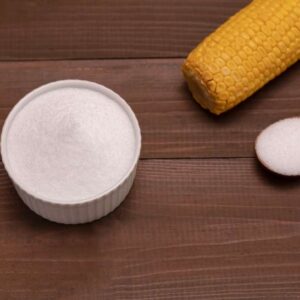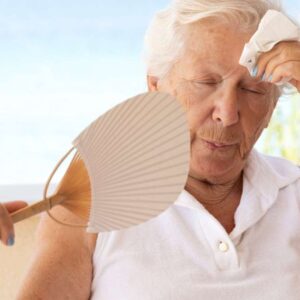
Could This Pest Ruin Your BBQ?
We’ve all heard the warnings about ticks and Lyme disease.
But now there’s a new tick in town that’s causing quite a stir—and it doesn’t even spread Lyme.
Meet the lone star tick.
This aggressive little critter is making its way across the U.S., leaving a trail of concerned health experts in its wake.
If you haven’t heard about this menace yet, brace yourself—because this tick has some nasty tricks up its sleeve.
Lone star ticks are found primarily in the eastern, southeastern, and south-central United States and have expanded their range over the last few decades.
These ticks don’t spread Lyme disease, but they CAN transmit other serious illnesses, such as ehrlichiosis, tularemia, and Southern Tick-Associated Rash Illness. However, their most bizarre calling card is a mysterious red meat allergy called Alpha-gal syndrome, which they’ve been linked to.
That’s right, one bite from this little creepy crawly could turn your delicious backyard barbecue into a dietary nightmare.
So, how do you protect yourself from this growing threat? Don’t worry—you don’t have to become a hermit. I’ll give you some practical steps to “tick-proof” yourself before your next outdoor event.
But first, let’s talk about how you can spot these ticks…
This species gets its name from the distinctive white spot or “lone star” found on the backs of adult females. Adult males are more difficult to identify but are less likely to bite. Smaller than the females, the male’s oval-shaped reddish-brown bodies have small white markings or streaks around the edge.
But you really need to watch out for the babies. Like many other tick species, these tiny terrors hunt in hungry “packs,” creating what some horrified observers have dubbed “tick bombs.”
Just remember, enjoying the great outdoors is vital for your health and well-being. So don’t let a fear of ticks hold you back.
Instead, follow these common-sense tips that can help keep you safe while you’re out there living life to the fullest.
- Dress smart: Wear light-colored clothing. It’s less appealing to ticks and makes them easier to spot.
- Do a full-body check: Give yourself a thorough once-over after spending time outdoors. Pay extra attention to your groin, underarms, and scalp.
- Laundry first: As soon as you get home, strip down and toss your clothes in the dryer on high for 20 minutes. The heat will zap any hitchhiking ticks.
- Go natural: Before heading out, apply some natural bug repellent. Look for rosemary, lemongrass, cedar, peppermint, thyme, or geraniol oil blends. Or try 2-undecanone, made from wild tomato oil.
- Stay vigilant: Watch for flu-like symptoms in the weeks after outdoor activities. If they crop up, see your doctor for a blood test.
So go ahead and plan that camping trip or afternoon hike. Now that you’re tick-aware, you’ll be able to focus on the beauty of nature instead of worrying about those unwanted passengers.
P.S. Summertime danger puts seniors at RISK.
Source:
Lone Star Tick – Amblyomma americanum, Department of Environmental Protection, [dep. pa. gov]
Written By Dr. Scott Olson, ND
Nearly 25 years ago, failed mainstream medical treatments left Dr. Olson in constant pain – and his health in ruins. And that’s when he did something REVOLUTIONARY. He began his career in medicine – and dedicated his life to uncovering the true, underlying causes of disease.
Through his innovative medical practices in Tennessee and Colorado, Dr. Olson has helped cure countless seniors from across America of arthritis… heart disease… diabetes… and even cancer. All without risky prescription drugs or painful surgeries.
View More Free Articles
A New Reason to Ditch Processed Junk
If you’ve ever walked the inside aisles of your local grocery store and thought, “This is all just junk,” your instincts were spot on. A new study published in the journal Thorax just added another red flag to the list of dangers linked to ultra-processed food—a 41 percent higher risk of lung cancer. That’s right....
When Being Winded on Stairs Is Serious (And When It Isn’t)
I had an athlete visit me recently because he experienced shortness of breath while climbing stairs. He is in great shape, so he was worried about what it might mean. “Doc,” he said, “I run five miles three times a week. Why am I huffing and puffing after two flights of stairs?” His concern is...
Study EXPOSES Hidden Danger Lurking in Your Car
We think of our homes and cars as safe havens. But according to a startling new study, they may be flooding your lungs with microscopic plastic particles—every single day. Researchers in France recently found that adults inhale an average of 68,000 microplastic particles daily from indoor air alone. To put that in perspective, that’s about...
Mailbag: Is Modern Food Making You Snore?
“What can cause snoring, and is there a way to correct this issue?” —Seeking Silence Hi Seeking, Snoring happens when the soft tissues in your throat relax and vibrate as air passes through during sleep. While several factors can cause snoring—from sleep position to nasal congestion—I want to share one trigger that might surprise you....
Simple Food Swap SLASHES Dementia Risk 28%
Let’s be honest… who would jump at the chance to cut their dementia risk by 28 percent. And no, you don’t need to run marathons, survive on broccoli, or learn to play the zither (whatever that is) to make it happen. All it takes is one easy swap—something that’s probably already in your refrigerator. Researchers...
This SMART Floss Exposes Hidden Health Danger
Scientists have created dental floss that doesn’t just clean between your teeth—it also tracks your stress while you’re flossing. Now, I know what you’re thinking… “Great—now even flossing is going to stress me out by telling me how stressed I am.” But this fascinating new tool from Tufts University could be a game-changer for understanding...
Is This "Safe" Sweetener Damaging Your Brain?
The headlines are alarming… “Popular Sugar Substitute Linked to Brain Cell Damage” and “Erythritol Could Damage Critical Brain Barrier” are just two of the dozens I’ve spotted recently. But before you toss every sugar-free product in your pantry, let’s take a closer look at what this study actually shows—and what it doesn’t. The latest research...
This Summer Threat Could SPIKE Your Blood Sugar
Picture this… It’s another scorching hot summer day. You crank up the air conditioning while watching the weather forecast, which predicts yet another “record-breaking” heat wave. It’s starting to feel like just another miserably uncomfortable summer. But what you might not realize is that—if you have diabetes—those rising temps could do far more damage to...
Move Over Yogurt—5 Foods That Pack MORE Probiotics
Let’s talk about your gut. The microbiome is the collection of trillions of bacteria and other tiny organisms that live in and on your body—especially in your gut—and help keep you healthy. I’ve written often about how vital it is to maintain a healthy microbiome. And you might have dutifully added yogurt to your shopping...
Is Your Heart Older Than YOU?
Maybe you feel young for your age. Good energy, decent sleep, eating your veggies. But what if I told you your heart might be a decade older than the rest of you? That’s exactly what researchers at Northwestern University found in a new study published in JAMA Cardiology. The average American woman’s heart is about...









